Kavenz VHP G2
Wheel Size: 29’’ front / 27.5’’ or 29’’ rear
Suspension Travel:
- Frame travel: 120, 140, 160, or 180 mm
- Fork travel: 130 – 200 mm (recommendation varies based on rear travel)
Geometry Highlights:
- Sizes offered: S, M, L, XL, 2XL, 3XL
- Headtube angle: 64°
- Reach: 480 mm (size Large)
- Chainstay length: 419 mm (MX), with +0, +10, and +20 mm dropout options available
Frame Material: Aluminum
Price: €3,000 w/ VAT / $2,850 USD excl. VAT (frame only, no gearbox or suspension)
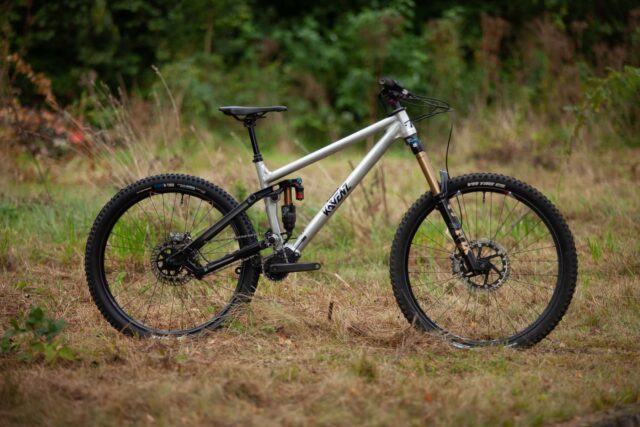
Intro
Kavenz’s original VHP G never saw broad availability, but was an interesting adaptation of their VHP frame design to experiment with gearbox compatibility. With the VHP G2, Kavenz has taken what they learned from the VPG G prototypes and blended in the latest features from their non-gearbox VHP V7 design for an impressively modular option for gearbox aficionados.
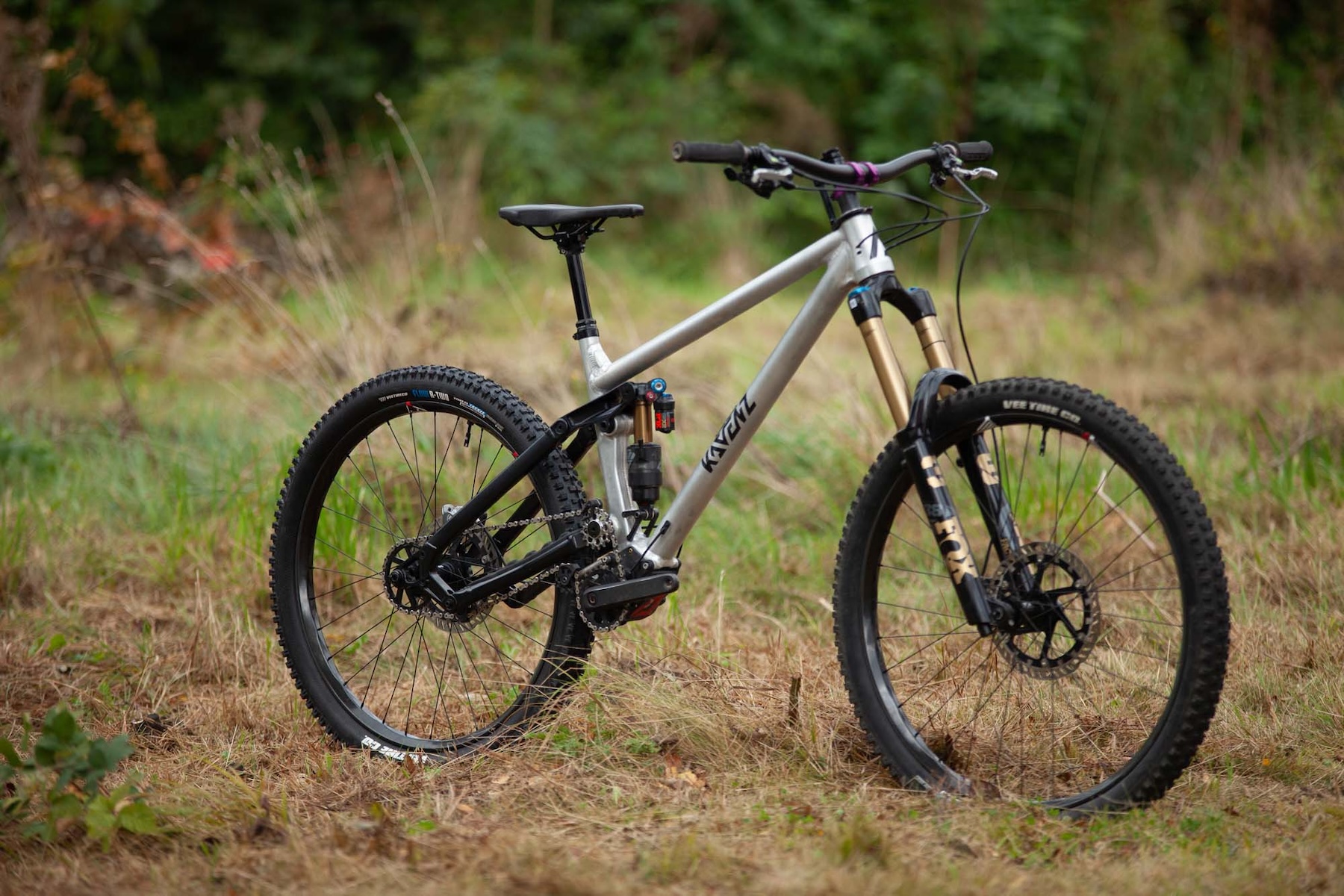
The Frame
Gearboxes have been in constant development for a long time now, but haven’t quite broken into the mainstream. That hasn’t stopped keyboard warriors across the Internet from clamoring for more, so it’s likely worth pausing on some context to answer the “but why a gearbox?” question.
Ranging from “derailleur in a box” implementations like the Honda RN-01 Downhill bike raced in the early 2000s to the more complex Pinion systems that almost resemble a motorcycle transmission, gearboxes essentially remove the cassette and rear derailleur from the back of the bike and place those parts in the center of the bike near the cranks.

As basic as that sounds in principle, it’s quite a packaging challenge with how complex many full-suspension mountain bikes have become, but it also promises many benefits. The most obvious is that the rear derailleur is no longer dangling from the chainstay, reducing the odds of impacts with trailside debris. Perhaps more impactful on performance is the suspension benefits — removing all of that weight from the rear wheel reduces the unsprung weight at the rear end of the bike (i.e., mass that is not suspended by the rear shock), reducing inertia and improving the rear wheel’s ability to track the ground. Gearboxes also allow for the gears to be immersed in lubrication fluid and fully sealed away from the elements, reducing the need for maintenance.
Of course, gearboxes also have a host of drawbacks that have kept them from having broader appeal. For one, they are inherently more complex — while they’re theoretically lower maintenance, addressing any issues may fall beyond the abilities of the average mechanic. Secondly, they tend to weigh a good bit more than a relatively simple derailleur and cassette setup, thanks to the need for a large (and durable) casing to keep everything sealed and out of the elements. They shift differently too, with most options requiring that the rider stop pedaling in order to execute a shift — almost like pulling a clutch on a manual transmission. And finally, they tend to be quite expensive.
That said, the promising performance benefits of a well-executed gearbox have kept development humming along, with Pinion and Effigear leading the charge as the most broadly available options. Pinion offers several options, with their most current mountain bike-oriented versions being the P-Line and C-Line. The P-Line offers up to 18 speeds with a burly (but heavier) aluminum casing, while the C-Line is available in 6, 9, or 12 speeds and with a lighter magnesium casing. Effigear’s Mimic system has 9 speeds, with variable gear steps that more closely imitate the gear steps of a conventional cassette.

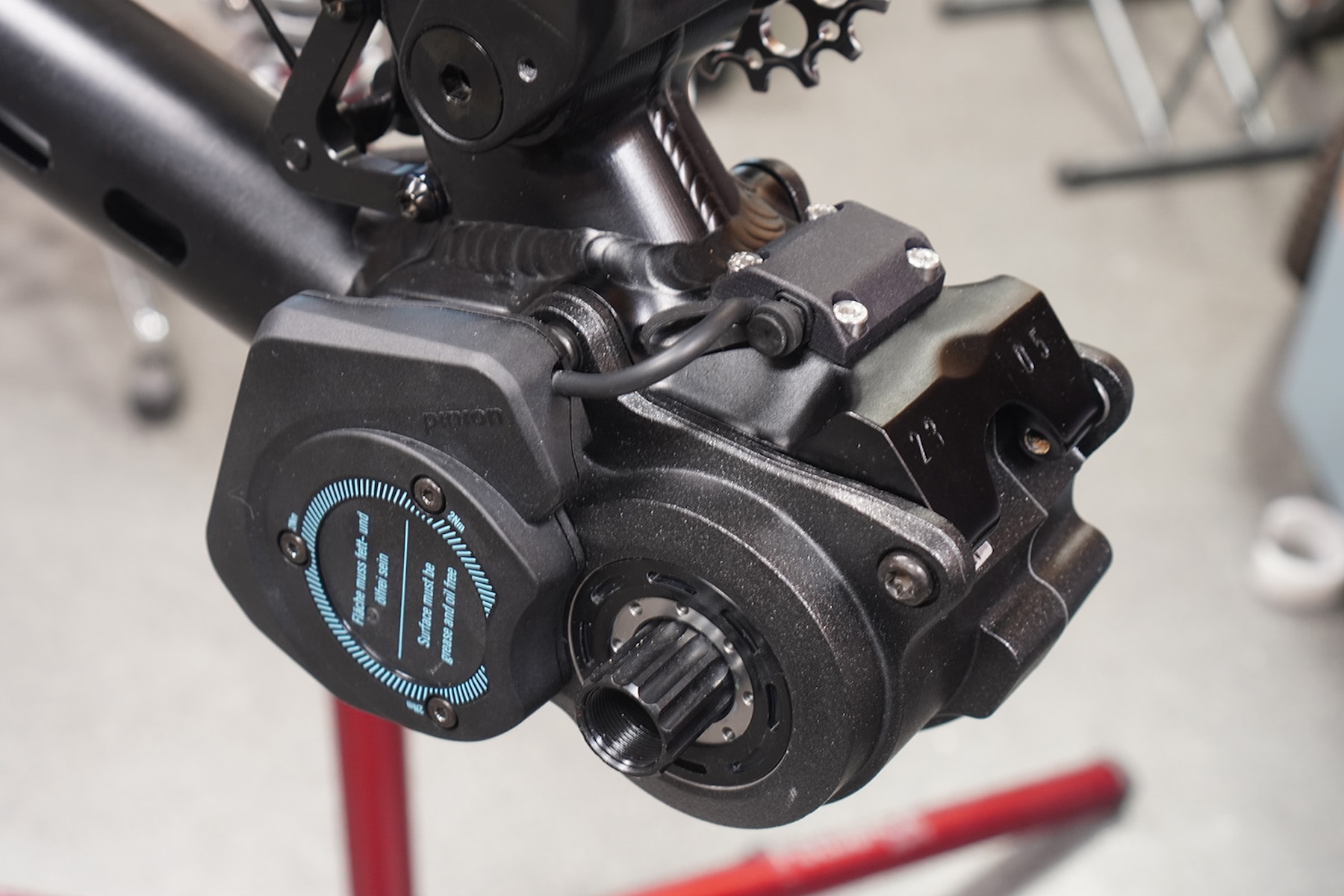
The VHP G2 aims to give riders choice, starting with its broad compatibility with multiple gearbox types. Pinion’s P-, C-, and T-Line systems will all work, along with their Smart.Shift electronic shifting setup. Riders more interested in Effigear systems can go with the Effigear Mimic as well. Your gearbox of choice can be bought from Kavenz or can be purchased on its own.
The VHP G2 is also compatible with Kavenz’s multiple shock mount options to allow for different travel configurations when combined with specified shock sizes. Kavenz has also incorporated the replaceable dropouts from their VHP V7 design to allow for customization of chainstay length. Due to design requirements to allow clearance for a gearbox unit, a 29’’ rear wheel requires using the longest +20 mm dropouts, whereas using a smaller 27.5’’ wheel for an MX setup opens up the flexibility of using any of the three available dropout lengths.
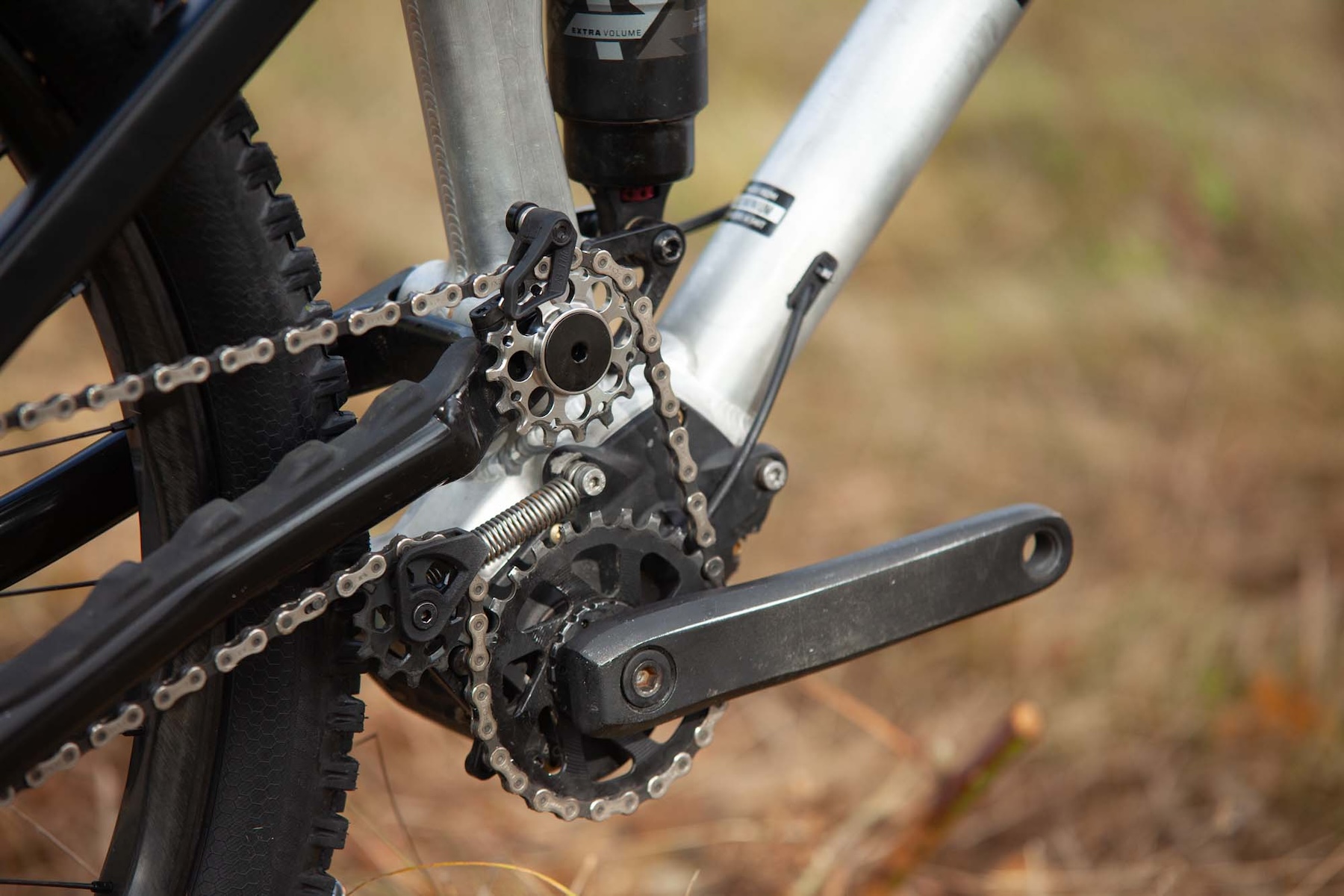
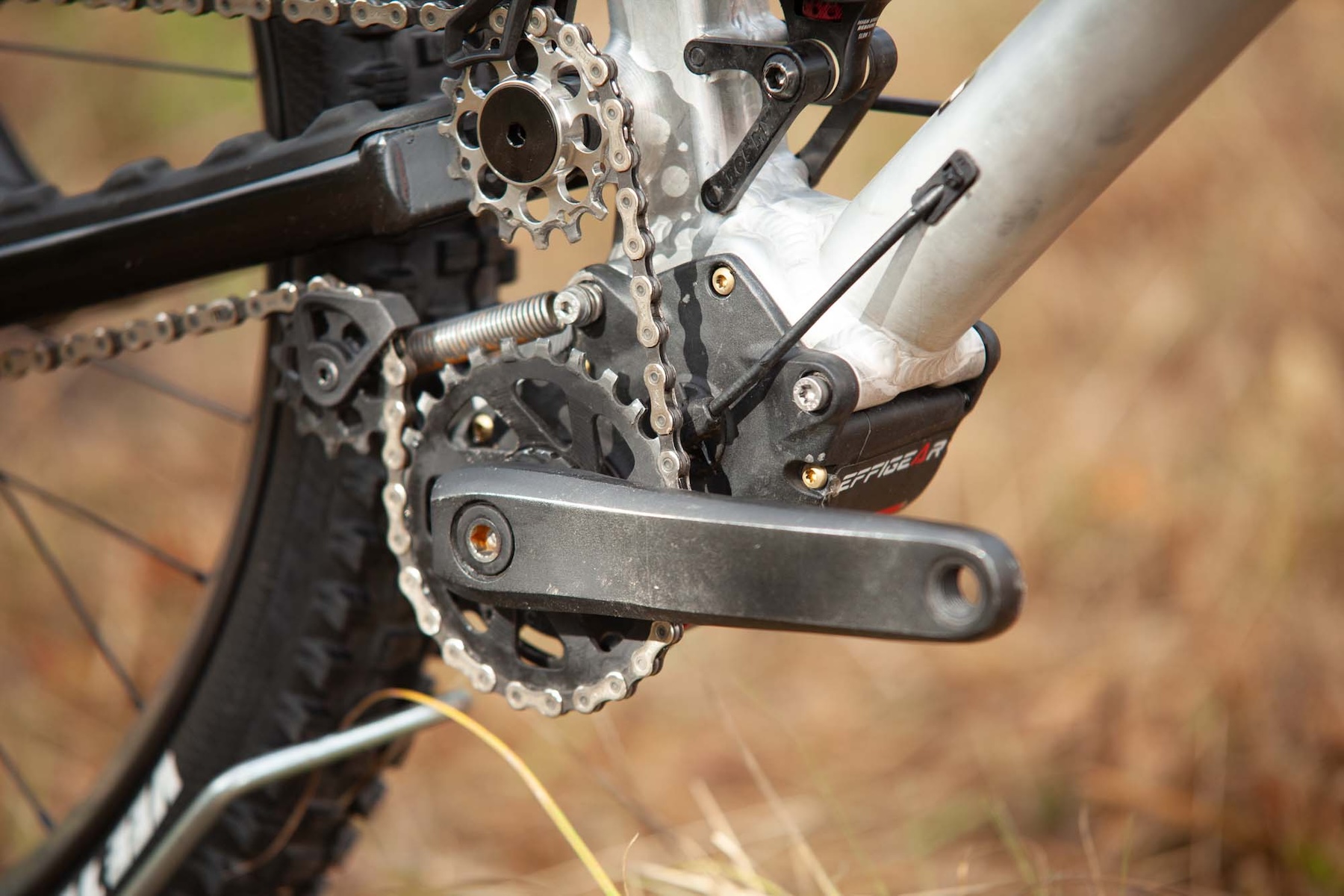

The available options are as follows, and note that the number alongside the “VHP” name indicates the centimeters of travel — i.e., VHP16 has 16 cm (160 mm) of travel:
- VHP12-29 – requires +20mm dropouts (MX option coming in the future)
- VHP-14-MX – compatible with +0mm, +10mm & +20mm dropouts
- VHP14-29 – requires +20mm dropouts
- VHP-16-MX – compatible with +0mm, +10mm & +20mm dropouts
- VHP16-29 – requires +20mm dropouts
- VHP-18-MX – compatible with +0mm, +10mm & +20mm dropouts
- VHP18-29 – requires +20mm dropouts
Of course, all of the other details of the VHP platform remain, including the 7000-series aluminum frame, stainless steel idler pulley, and other details. We run through all of those in more detail in our VHP16 V7 review. Additionally, Kavenz is working on a new chain tensioner option that mounts rather discreetly to the chainstay pivot — it’s not available yet, but it should be soon.
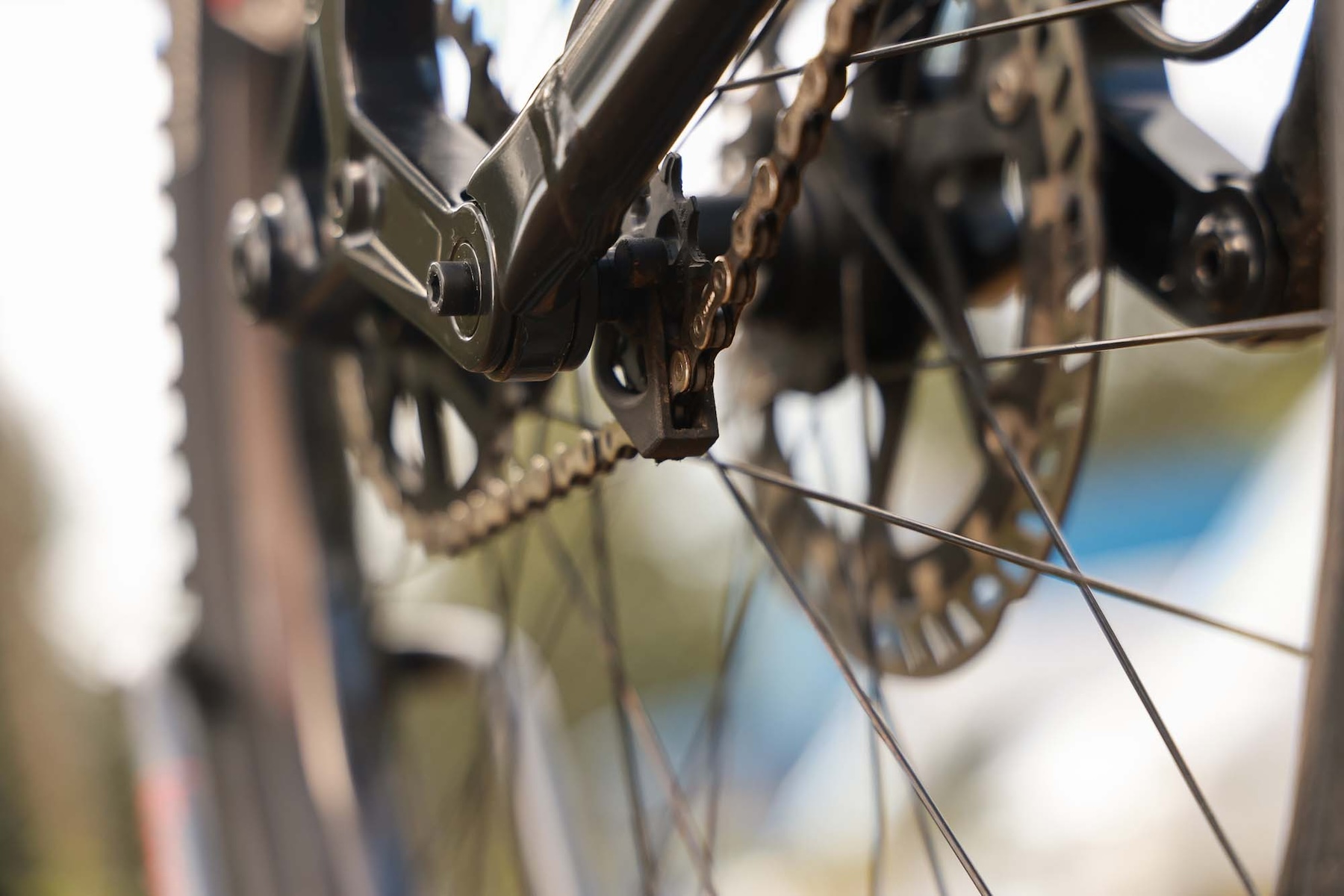
Fit & Geometry
Aside from the chainstay length limitations mentioned above relating to running a 29’’ rear wheel, the VHP G2 shares mostly identical geometry with the VHP V7 frame. Kavenz notes the shorter 400 mm seat tube used on a size Small VHP G2 (420 mm on the regular VHP V7), and there are a few slight differences in the listed reach and stack measurements in larger sizes, but the changes are quite small.
For a Large in the 160 mm configuration, the reach sits at 480 mm, with a 64° headtube angle and 639 mm stack. That stack figure is the same across Small through Large sizes due to a shared 110 mm headtube being used, whereas XL and above jump to 652 mm stack thanks to a 125 mm headtube. Chainstay length is listed at 419 mm, but that’s for the mixed wheel setup — as with the VHP V7 frames, using the shock mount for a 29’’ wheel shifts the static position of the axle and results in 425 mm chainstays. Note that those numbers are with the +0 mm dropouts — +10 mm dropouts are recommended by Kavenz for the Large, and a +20 mm option exists too. Otherwise, the effective seat tube angle is fairly steep at 77.5°, and the actual seat tube angle is 75.5°, meaning that riders requiring longer than average seat post lengths won’t find themselves unexpectedly sitting too far rearward.
Note that with the VHP G2, it does not appear that Kavenz offers the semi-custom geometry as offered with the VHP V7. However, with six sizes on offer, there is ample choice available, and buyers can still select their preferred dropout length as well.
Full geometry figures are as follows:
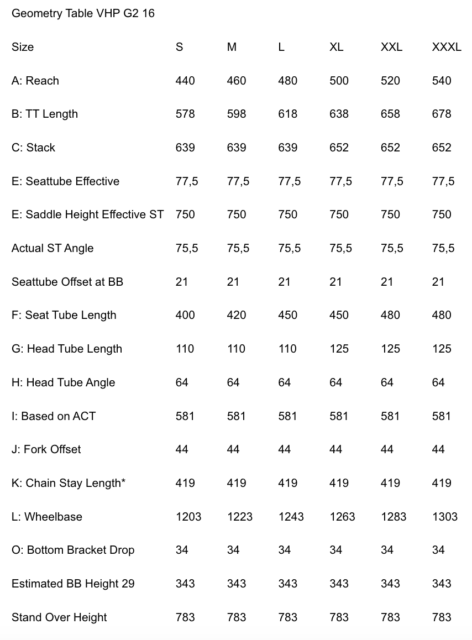
The Builds
As with the non-gearbox VHP V7, Kavenz doesn’t currently offer complete builds — it’s a frame-only affair, with the option to purchase a gearbox unit, and a shock and/or fork to complete the package. At this time, Kavenz offers the Effigear Mimic and Pinion C1.12 gearbox units, with the option of Smart.Shift available for the Pinion system. As far as suspension goes, Kavenz offers fork and shock options from Fox and Intend.
Kavenz can also supply several other drivetrain parts, including their recommended sprocket sets for each gearbox option, as well as cranks and a single-speed DT Swiss hub if you’d like.
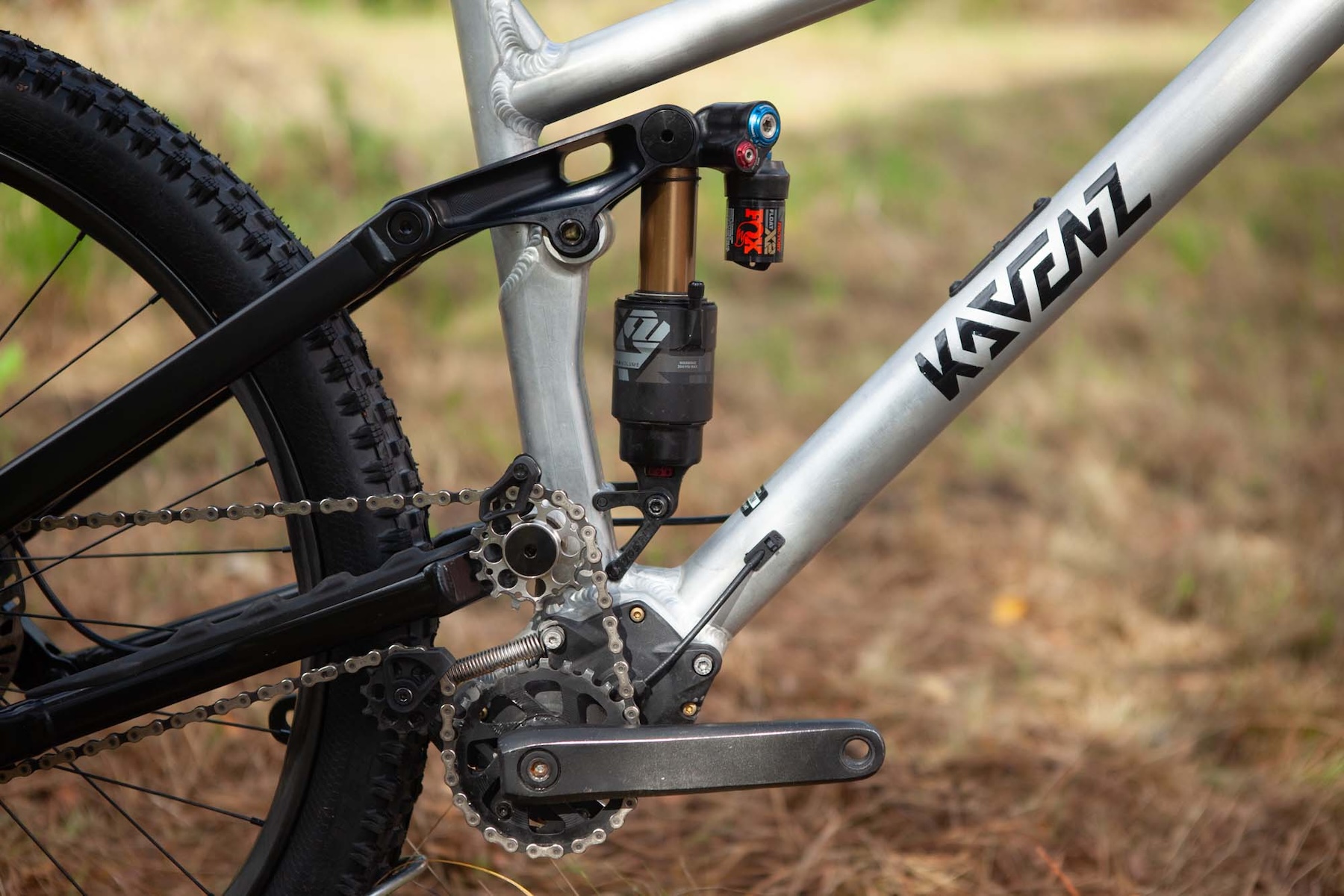
Some Questions / Things We’re Curious About
(1) Given our experience with the VHP16 V7, how much differently does the gearbox-equipped version perform?
(2) How do the Effigear and Pinion gearbox options compare?
Bottom Line (For Now)
Gearbox bikes haven’t yet achieved widespread adaptation despite some real benefits and a vocal cadre of supporters. That hasn’t stopped companies like Kavenz from exploring their benefits, and the VHP G2 stands as a rare yet compelling option that allows enormous customization options within a single gearbox-specific design. We haven’t yet spent much time on gearbox bikes here at Blister, but it sounds like that will be changing soon — we should be getting our hands on a VHP G2 in a few months and can’t wait to report back once we do.

Any moves made on getting one of these for testing?
Still working on it – it’s still on our radar, and we’ll be sure to post an update once we get time on it.